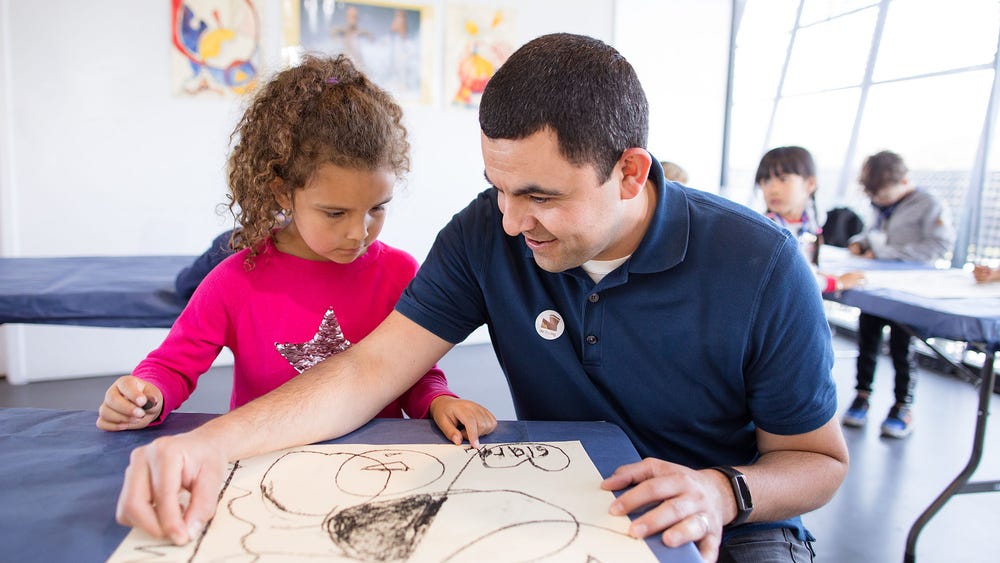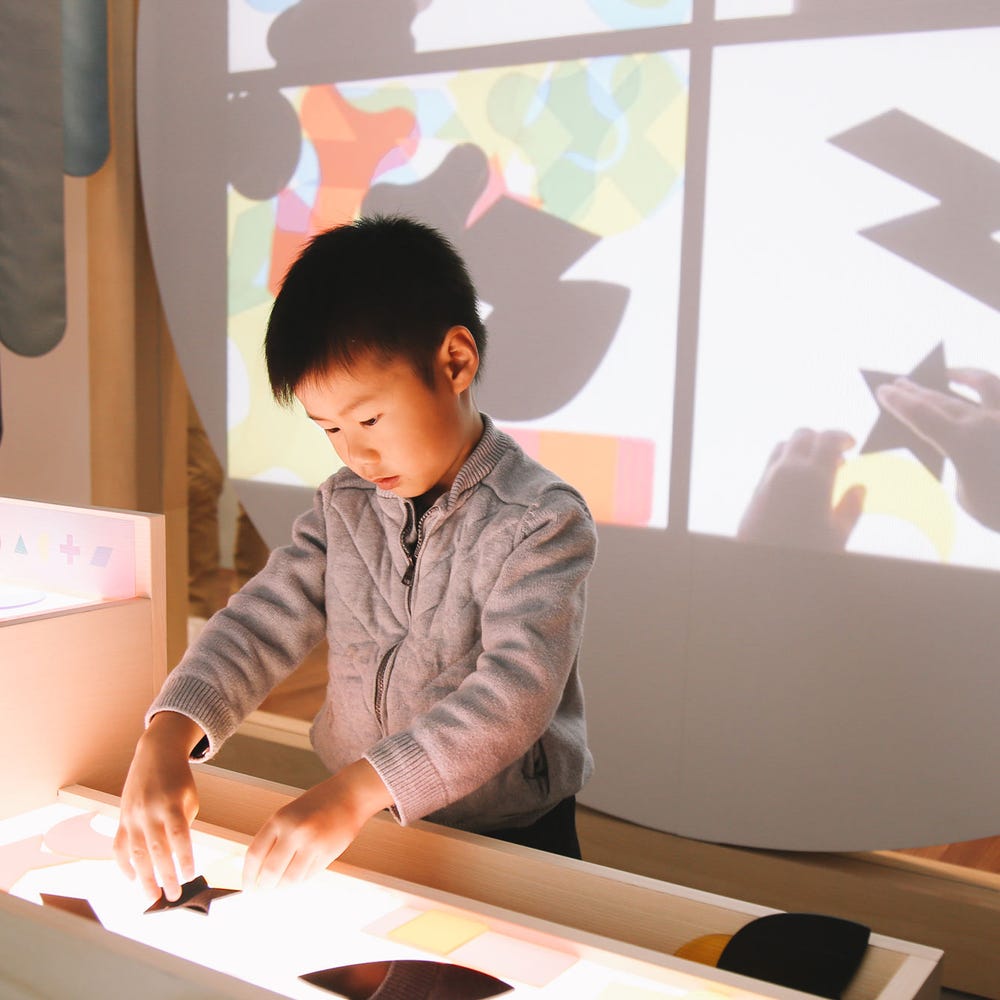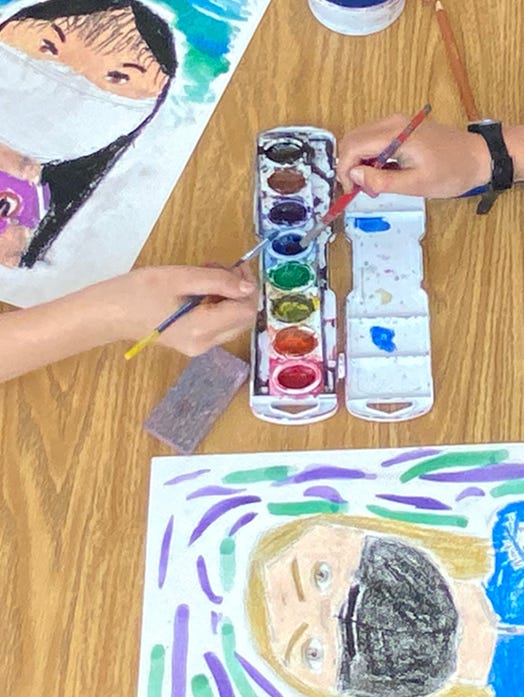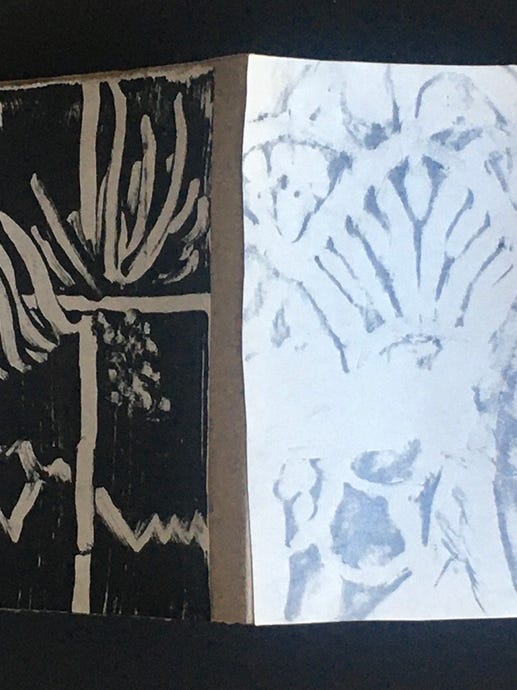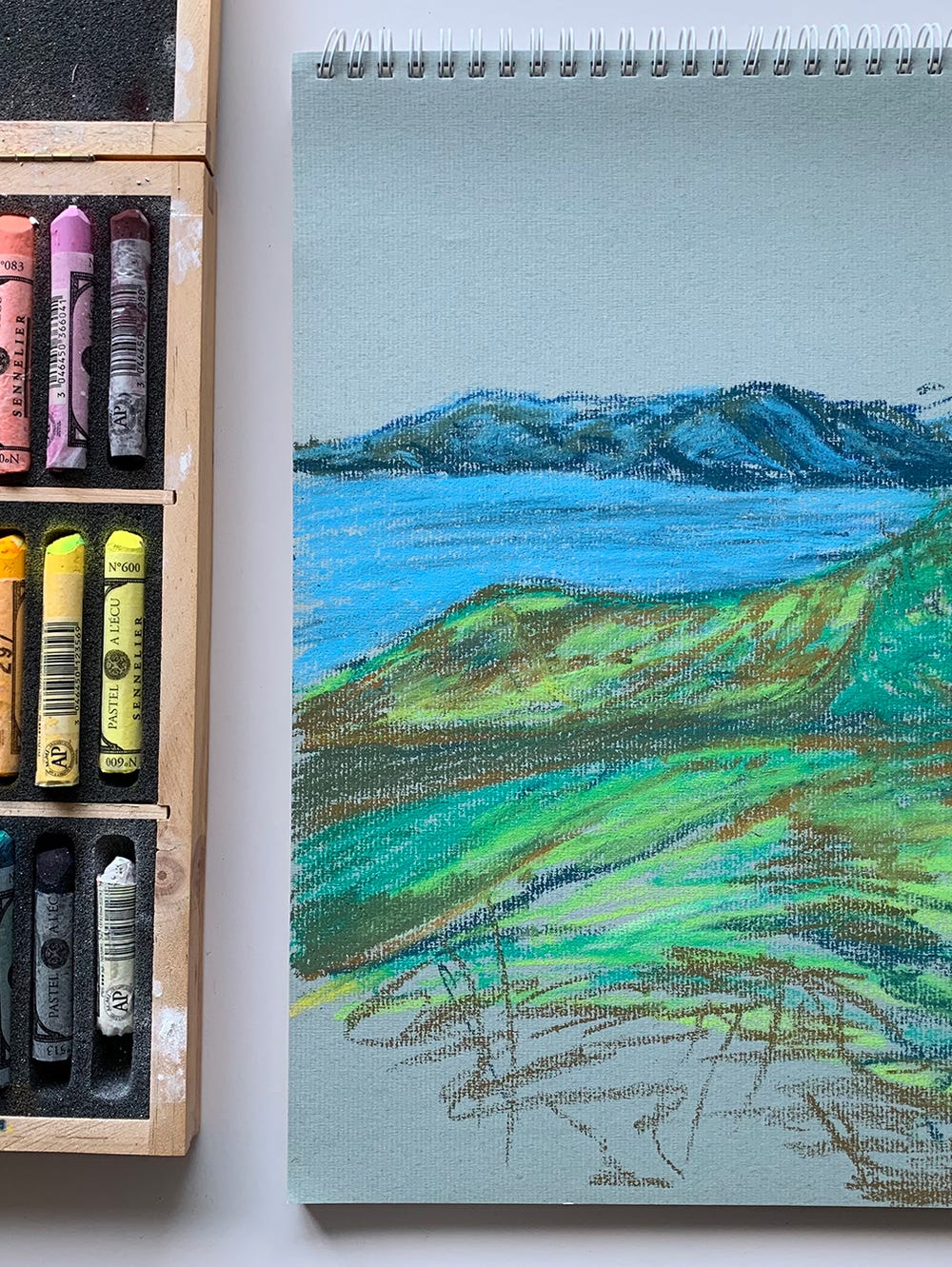“Do you like it?” Kids often share their artworks as they work. Support their curiosity about the artistic process with the following techniques:
Ask, “What do you think? Is it just the way you want it?” If yes, get out your colors and proceed. If no, get out your eraser and fix what you need to. That’s why we start with a light sketch of basic shapes — it’s much easier to erase and start over if you haven’t gotten too far! Remember, though, especially for the little ones, it’s OK to get another piece of paper.
Accept that it probably won’t be perfect. It will probably be much better than you think it will, once you get it all colored in and finished. Besides, when you’re done, you can figure out what you’d like to do better next time.
Praise the effort. Art, like anything, can be tough. Compliment any effort to extend beyond the simple skill level they already had. If they do a formulaic drawing they already know, perhaps they are not ready yet for the challenge of finding a new approach. If they try a new way, like filling in the background, attempting to show the body in motion, or attempting details in the face, give them lots of support for this — they put in real effort!
Reflection
First, give it a rest. I suggest letting the child or children spend their energy digging into their portrait making. When they are finished, put the picture somewhere that it can be viewed casually for a while. This could be on the refrigerator, on a side table, or taped up on the wall. Let them rest (art making is hard work!) and come back together later to discuss. Passing by it during the day will give a better perspective on what works or doesn’t.
For younger children, make material observations. Small children particularly benefit from observing what is “concrete” in their artwork. Here are some examples: “I see that you put this red right up against this blue, in fact it’s even mixed up a bit. But here are two colors that aren’t touching,” or “Look how big (or fluffy, or long) you drew the cat — she must be very important to you.” Take the time to observe, notice one aspect, and see if it leads to a discussion. Try to stay away from comments like, “It looks like a _______.” This can be confusing and lead the child off the focus of their own intentions.
With older children, focus on feeling and mood. Notice the setting and the details. Often these have a metaphoric quality. Color choice, light or dark colors, and objects in the background all produce a mood. Notice these and ask about how the person in the artwork feels in this environment. Some examples: “This person looks so comfy cuddled up with the cat!” and “This dark background makes this person look alone, but powerful,” and “Look at all the ruffles on that dress. This person knows a lot about fancy details.”
Text by Raphael Noz, senior teaching artist.
